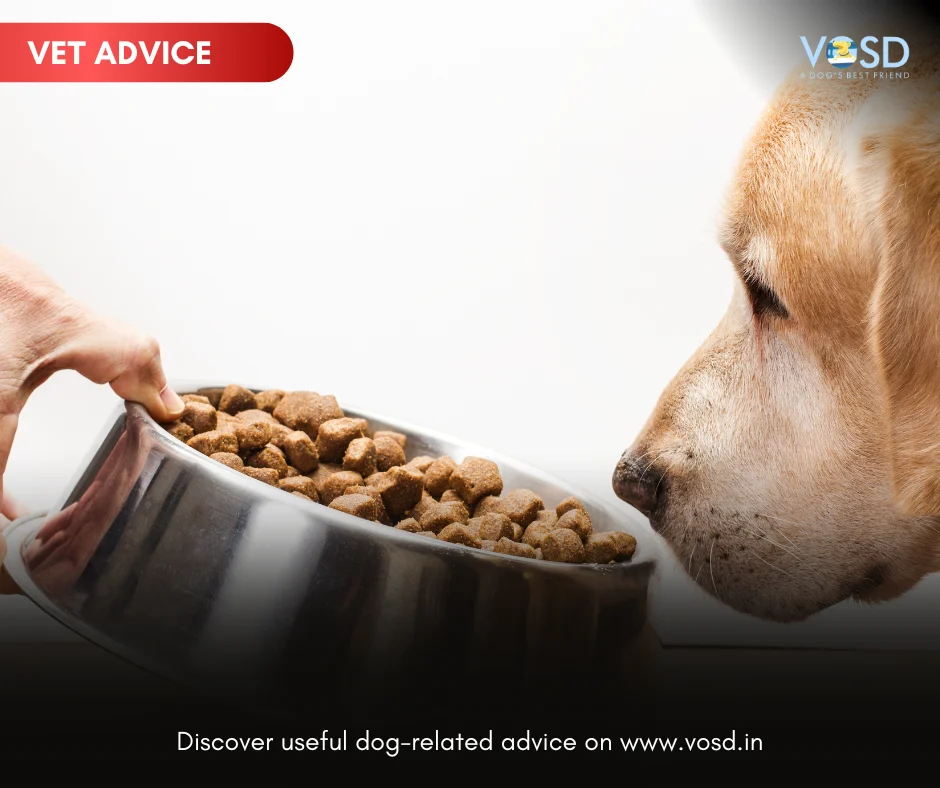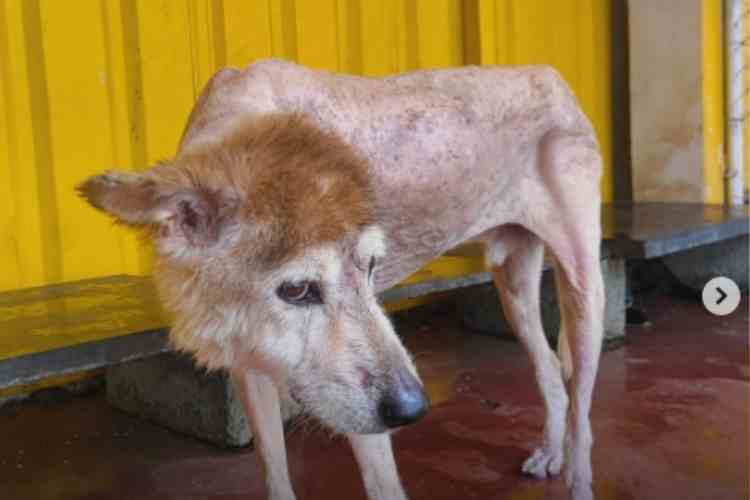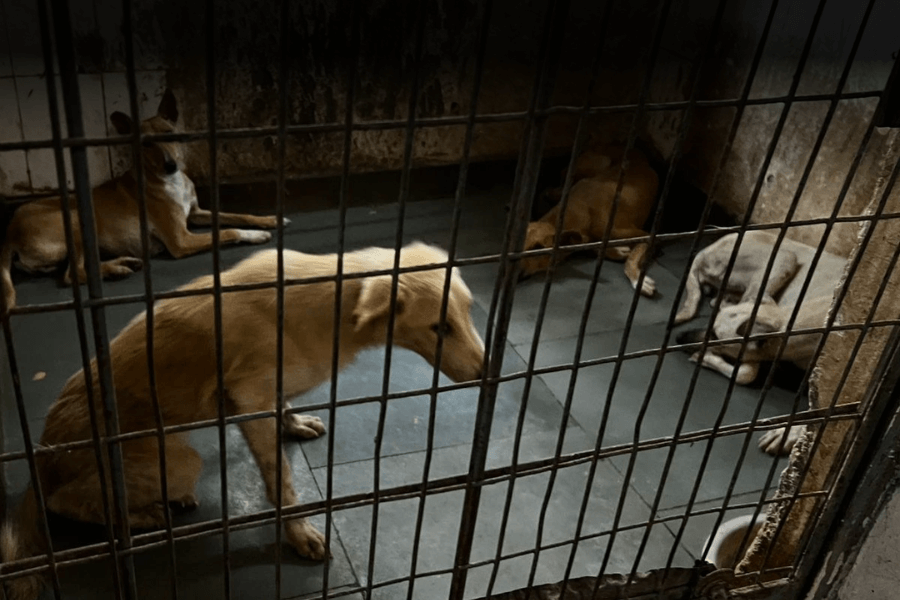Ramu had been eating the same old stuff for several months now. To introduce some thrill into Ramu’s life, the owner introduced a new variety of food into his diet. The sweet dog ate the food with much relish but later that day, he suffered a serious bout of GI infection and had to be rushed to the hospital.
Ramu’s story has a great inherent lesson. Owners must do their homework before changing their dog’s diet and shifting to different food items should always be gradual so that the canine adapts to the transition better. In this blog, we present to you all the information you should be privy to before switching your dog’s diet.
SWITCHING COLD TURKEY
Switching your dog’s food “cold turkey” means abruptly changing their diet without any gradual transition period. This approach can potentially lead to digestive upset or refusal to eat, especially if your dog has a sensitive stomach or is particularly picky about their food.
It’s generally recommended to transition your dog to new food gradually over the course of about a week or so and take a vet second opinion on the new food items. This gradual transition allows their digestive system to adjust to the new food, reducing the likelihood of gastrointestinal issues.
CHANGING PROTEIN SOURCES SUDDENLY
Switching your dog’s protein sources suddenly to a completely new protein source to your dog’s diet without any gradual transition period is similar to switching their entire food cold turkey.
Dogs can sometimes have sensitive stomachs, and sudden changes in their diet, including changes in protein sources, may cause digestive upset such as diarrhea, vomiting, or refusal to eat. Therefore, it’s generally recommended to introduce new protein sources gradually to allow your dog’s digestive system to adjust.
NOT TRANSITIONING OVER 5-7 DAYS
If an owner tries to immediately switch protein sources instead of transitioning diet over 5-7 days complications may occur. Introducing a new protein source without a transition period may make it difficult to pinpoint if your dog has any allergies or intolerances to the new protein. Gradual transitions allow for better monitoring of your dog’s response to the new food. Some dogs may be picky eaters or have strong preferences for certain flavors or types of protein. A sudden change in their diet may lead to them refusing to eat the new food, which can be concerning if they don’t consume enough nutrients.
NEGLECTING TO SLOWLY INTRODUCE NEW FOOD
Neglecting to slowly introduce new food to your dog’s diet can have several potential consequences, including food aversion, digestive upset, allergic reactions, stress that can manifest in behavioural and appetite changes. It can lead to nutritional deficiencies and digestive problems.
MAKING PORTIONS DRASTICALLY DIFFERENT
Making portions drastically different in your dog’s food can have several potential effects. Sudden increases or decreases in food quantity may disrupt their digestive system, leading to symptoms like diarrhea, vomiting, or gastrointestinal discomfort. Significant changes in portion sizes may result in an imbalance of nutrients in your dog’s diet. For example, reducing portions too drastically could lead to nutritional deficiencies, while increasing portions excessively could result in overnutrition. Some dogs may become irritable or anxious if their food intake is significantly altered.
MIXING KIBBLE SIZES DISPROPORTIONATELY
Mixing kibble sizes disproportionately may lead to selective eating behavior in some dogs. If the size disparity between the kibble pieces is too great, it may pose a choking hazard, especially for dogs that tend to gulp their food without chewing thoroughly. Some dogs may experience digestive upset if they have difficulty digesting certain kibble sizes. Disproportionately mixing kibble sizes may also result in an imbalance of nutrients if your dog constantly picks out certain kibble sizes and avoids others.
GETTING IMPATIENT AND TRANSITIONING TOO FAST
Transitioning your dog’s diet too quickly due to impatience can have several potential negative consequences including digestive issues, stress and anxiety. While the immediate consequences of rapid diet transitions may include digestive upset and stress, there can also be long-term health effects if the new diet does not meet your dog’s nutritional requirements. Here’s a typical transition plan:
Days 1-2: Mix 25% of the new food with 75% of the old food.
Days 3-4: Mix 50% of the new food with 50% of the old food.
Days 5-6: Mix 75% of the new food with 25% of the old food.
Day 7: Feed 100% of the new food.
ASSUMING YOUR DOG WILL LIKE THE NEW FOOD
Assuming that your dog will like the newly introduced food can lead to potential disappointment and challenges if your dog doesn’t accept or enjoy the new food. Dogs, like humans, have individual preferences and tastes when it comes to food, and they may not always react positively to changes in their diet. Even if your dog initially accepts the new food, they may develop selective eating habits over time, preferring certain components of their diet while avoiding others.
FEEDING ONLY NEW FOOD TOO SOON
Feeding only new food to your dog too soon, without a gradual transition, may not be a good idea as it might lead to negative consequences such as nutritional imbalances and food aversion.
BUYING TOO MUCH NEW FOOD AT FIRST
It’s understandable to want to provide your dog with a variety of new foods, but introducing too much new food at once can potentially upset their stomach and lead to digestive issues. When transitioning to a new diet or introducing new foods, it’s important to do so gradually to allow your dog’s digestive system to adjust. One must also consider dog expenses before buying new food.
NOT MONITORING STOOL AND ENERGY LEVELS
Not monitoring your dog’s stool and energy levels after introducing a new food can result in overlooking important indicators of their health and well-being. Changes in your dog’s stool consistency, color, or frequency can indicate how well they are digesting and tolerating the new food. Loose stools or diarrhea may suggest digestive upset or intolerance to certain ingredients in the new food. Conversely, excessively firm stools could indicate constipation or inadequate hydration.
Your dog’s energy levels and overall behavior can provide insights into their nutritional status and comfort level with the new food. Changes in energy levels, such as lethargy or hyperactivity, may indicate discomfort, digestive issues, or inadequate nutrient absorption.
IGNORING SUBTLE SIGNS OF A BAD REACTION
Ignoring subtle signs of a bad reaction after introducing new food to your dog can have serious consequences for their health and well-being. Signs such as itching, licking, scratching, or changes in coat quality could indicate an allergic reaction or food intolerance. Ignoring these signs may lead to worsening symptoms or the development of more severe allergic reactions over time.
SWITCHING FLAVOURS AND PROTEINS SIMULTANEOUSLY
Switching flavors and proteins simultaneously while switching dog food can be risky, as it increases the likelihood of digestive upset or food sensitivities in your dog. Despite wanting to switch both flavor and protein simultaneously, try to do it gradually. Start by mixing a small amount of the new food (with the different flavor and protein) with your dog’s current food. Gradually increase the proportion of the new food while decreasing the old food over the course of about 7-10 days.
NOT CONSULTING YOUR VET FOR NEEDS
Consulting with a veterinarian before switching your dog’s food is highly recommended to ensure that the transition is done safely and meets your dog’s specific needs. Vets can provide valuable guidance based on factors such as your dog’s age, breed, health status, any pre-existing medical conditions, dietary preferences, and nutritional requirements.
FORGETTING TO CHECK LABEL FOR ISSUES
Checking the label for potential issues is a crucial step when switching your dog’s food. Carefully review the ingredients list to ensure that the new food does not contain any ingredients that your dog is allergic to or intolerant of. Look out for common allergens such as wheat, corn, soy, and certain proteins. If you’re switching to a new protein source, verify that it is a high-quality protein that is appropriate for your dog’s dietary needs. Ensure that the protein source is one that your dog tolerates well. Check if the food is formulated to meet the nutritional levels. Review the guaranteed analysis to ensure that the food contains appropriate levels of protein, fat, fiber, and other nutrients for your dog’s life stage (e.g., puppy, adult, senior).
CONCLUSION
Before making any significant dietary changes for your dog, including switching protein sources abruptly, it’s advisable to get some vet advice for dogs.
While it’s possible for some dogs to tolerate immediate changes in their diet without issues, it’s generally safer and more advisable to transition gradually when introducing new protein sources. This approach minimizes the risk of digestive upset and allows for better observation of your dog’s response to the new food.








